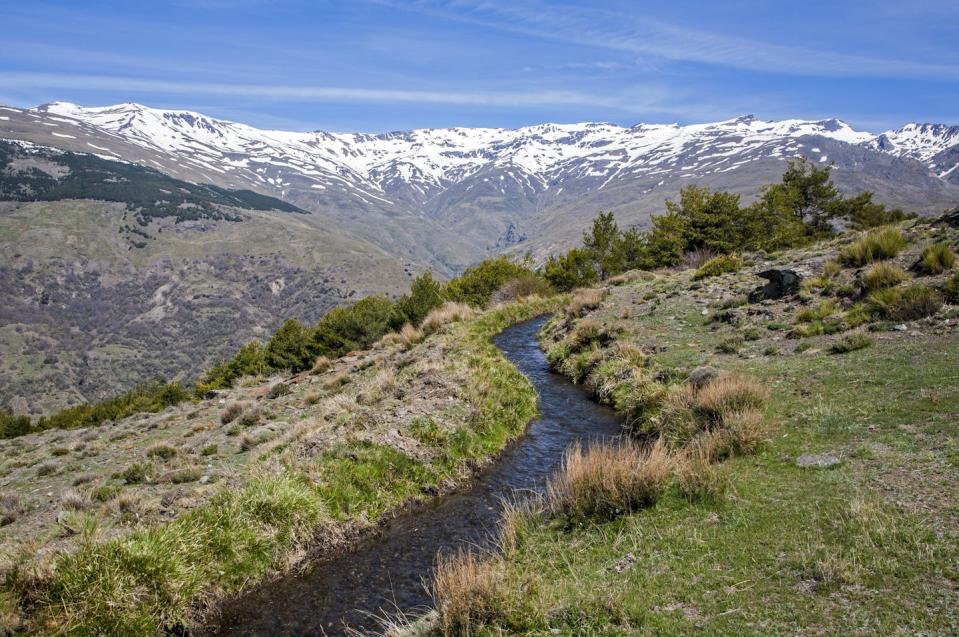New evidence emerging from dozens of archaeological discoveries around the world, from the once-thriving reservoirs and canals of Angkor Wat in Cambodia to abandoned Viking colonies in Greenland, paints pictures of the reality of civilizations struggling with unpredictable climate change and agricultural practices becoming unsustainable.
These discoveries include success stories of how ancient agricultural practices helped civilizations survive difficult times.
Zuni farmers in the southwestern United States weathered long periods of extremely low rainfall between 1200 and 1400 AD by adopting small-scale, decentralized irrigation systems. Farmers in Ghana weathered severe droughts between 1450 and 1650 by planting native African grains such as drought-tolerant pearl millet.
Such ancient practices are gaining new traction today. As countries face unprecedented heat waves, storms and melting ice caps, some farmers and international development organizations are delving into agricultural archives to revive these ancient solutions.

In Spain, drought-stricken farmers have reclaimed medieval Moorish irrigation technology. International companies hungry for carbon offsets have paid big bucks for biochar produced using pre-Columbian Amazon production techniques. Texas farmers have turned to ancient methods of growing cover crops to buffer against unpredictable weather.
But clinging to old technologies and techniques without considering the historical context misses one of the most important lessons ancient farmers can reveal: Agricultural sustainability is as much about power and sovereignty as it is about land, water and crops.
I am an archaeologist who studies agricultural sustainability in the past. Recent discoveries have shown that the human past is full of people coping with climate change in both sustainable and unsustainable ways. Archaeologists are discovering that ancient sustainability was closely tied to politics. However, these dynamics are often forgotten in today’s sustainability debates.
Maya milpa farming: Forest access essential
In the tropical lowlands of Mexico and Central America, Indigenous Maya farmers have practiced milpa farming for thousands of years. Milpa farmers have adapted to drought by gently manipulating the forest ecology through controlled burns and careful forest stewardship.
Milpa farming knowledge enabled many rural farmers to adapt to climate changes during the infamous Maya Collapse, a two-century period of political fragmentation and urban depopulation between 800 and 1000 AD. Crucially, later Maya political leaders worked with farmers to maintain this flexibility. Their light-handed approach is still visible in the artifacts and settlement patterns of post-Collapse farming communities and is preserved in the flexible tribute schedules for Maya farmers documented by 16th-century Spanish priests.
In my book, Rooted in the Land: Ancient Farmers, Famous Chiefs, and Environmental Justice in the Yucatán, I trace the deep history of the Maya milpa. Using archaeology, I show how ancient farmers adopted milpa agriculture in response to centuries of drought and political upheaval.
Modern Maya milpa practices began to gain public attention a few years ago, when international development organizations partnered with celebrity chefs like Noma’s René Redzepi and embraced the concept.
But these groups have condemned the traditional milpa practice of burning new forest land as unsustainable. Instead, they have promoted a “no-burn” version to grow certified organic corn for upscale restaurants. Their version of no-burn milpa relies on fertilizers to grow corn in a fixed location, rather than using controlled-fire ecology to manage soil fertility in vast forests.
The result has restricted traditional practices that Maya farmers have used for centuries, and has also led to a modern political threat to traditional Maya milpa farming: land grabbing.
Traditional milpa farming requires a lot of forested land because farmers must move their fields every few years. But the need for forests conflicts with hotel companies, industrial cattle ranches, and green energy developers who want cheap land and view Mayan milpa forest management practices as inefficient. No-burn milpa mitigates this conflict by confining corn farming to a small area indefinitely, rather than spreading it over generations of forest. But it also changes the tradition.
Maya milpa farmers now struggle to practice ancient agricultural techniques not because they have forgotten or lost them, but because neocolonial land privatization policies have effectively undermined farmers’ ability to manage forests as their ancestors did.
Increasingly, Milpa farmers are being forced to either adopt a rebranded version of their heritage or abandon farming altogether; many have already done so.
Mexico’s fragile artificial islands: Threats from development
When I look at the work of other archaeologists investigating ancient agricultural practices, I see the same intertwining of power and sustainability.
In central Mexico, chinampas are ancient systems of artificial islands and canals that have allowed farmers to grow food in wetlands for centuries.
The survival of chinampas is a legacy of deep ecological knowledge and a resource that enables societies to feed themselves.


But archaeology has revealed that generations of sustainable chinampa management could be disrupted almost overnight, when the expansionist Aztec Empire decided to repurpose Lake Xaltocan for salt production in the 14th century, rendering its chinampas unusable.
Today, the future of chinampa farming depends on a series of protected fields managed by local farmers on the swampy outskirts of Mexico City. These fields are now at risk as housing demand drives informal settlements into the chinampa area.
Raised fields in the Andes: A tale of labor exploitation
Traditional Andean agriculture in South America incorporates a variety of ancient cultivation techniques, one in particular has a complicated history of attracting revitalization efforts.
In the 1980s, government agencies, archaeologists, and development organizations spent a fortune trying to persuade Andean farmers to revive raised-field farming. Ancient raised fields had been found around Lake Titicaca on the border of Peru and Bolivia. These groups were convinced that this relict technology could alleviate hunger in the Andes by allowing successive potato harvests without the need for fallow time.
But Andean farmers had no connection to labor-intensive raised fields. The practice had been abandoned even before the rise of the Inca civilization in the 13th century. Efforts to revive ancient raised-field agriculture collapsed.
Since then, more archaeological discoveries around Lake Titicaca have suggested that ancient farmers were forced to work on raised fields by the expansionist Tiwanaku empire during its peak between 500 and 1100 AD. Far from the politically neutral narrative promoted by development organizations, raised fields were not there to help farmers feed themselves. They were a technology to exploit labor and extract surplus crops from ancient Andean farmers.
Respect for the past of old practices
Recovering ancestral farming techniques can be a step toward sustainable food systems, especially when descendant communities lead their recovery. The world can, and I believe should, turn back to reclaim agricultural practices from our collective past.
But we cannot claim that these practices are apolitical.
Maya milpa farmers who continue to practice controlled burns in defiance of land privatizers understand the value of ancient techniques and the threat posed by political power. So do Mexican chinampa farmers who work to restore local food to disenfranchised urban communities. And so do Andean farmers who refuse to participate in once-exploited raised-field rehabilitation projects.
Depending on how they are used, ancient agricultural practices can reinforce social inequalities or create more equitable food systems. Ancient practices are not inherently good – making them sustainable requires a deeper commitment to equitable and just food systems.
This article is republished from The Conversation, a nonprofit, independent news organization that brings you facts and trusted analysis to help you understand our complex world. By Chelsea Fisher University of South Carolina
Read more:
Chelsea Fisher has received research funding from the National Science Foundation, the Wenner-Gren Foundation, and the Fulbright-Hays Program.